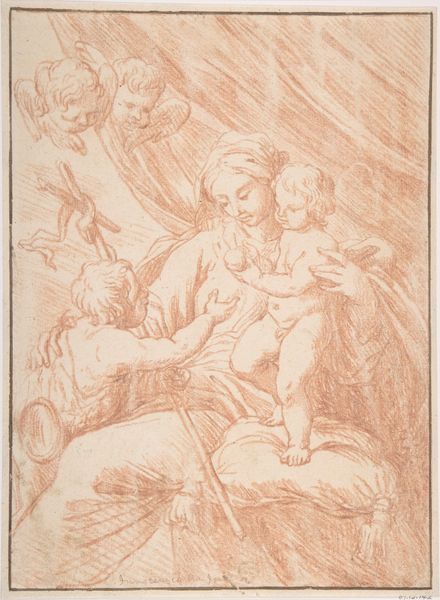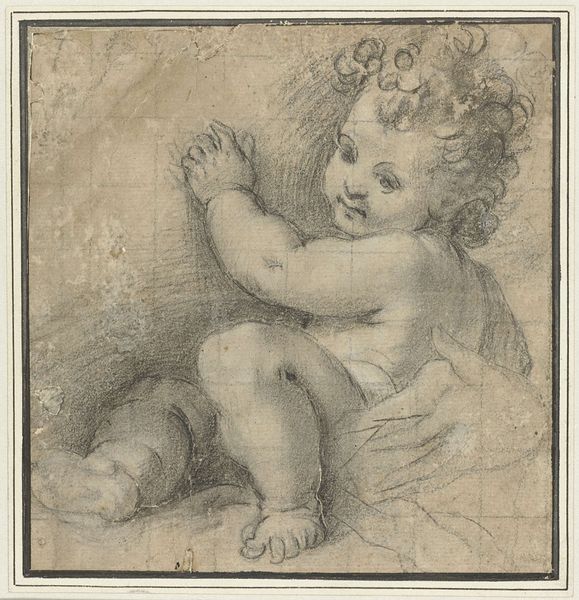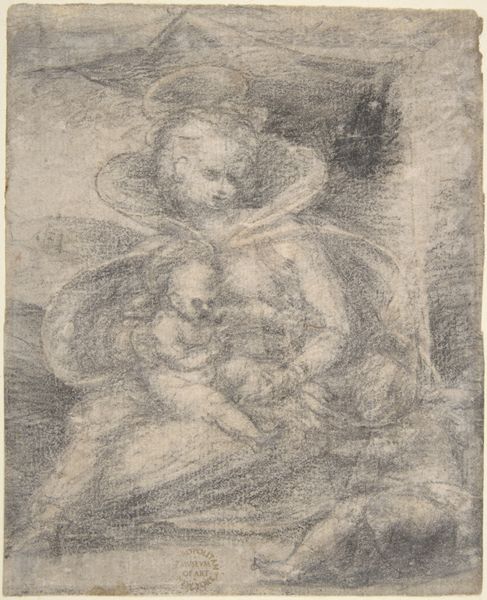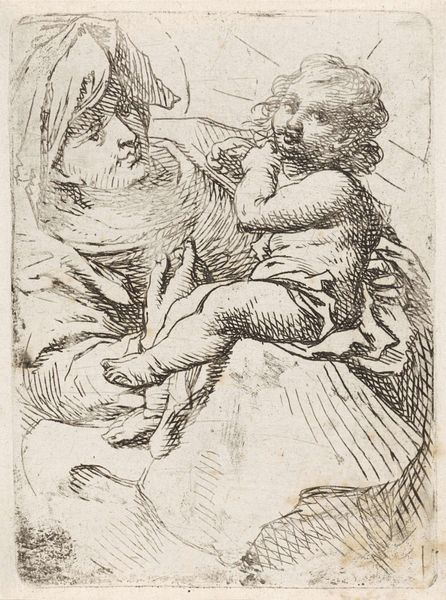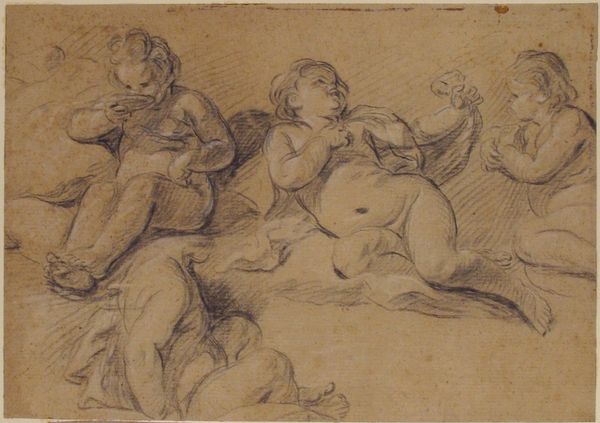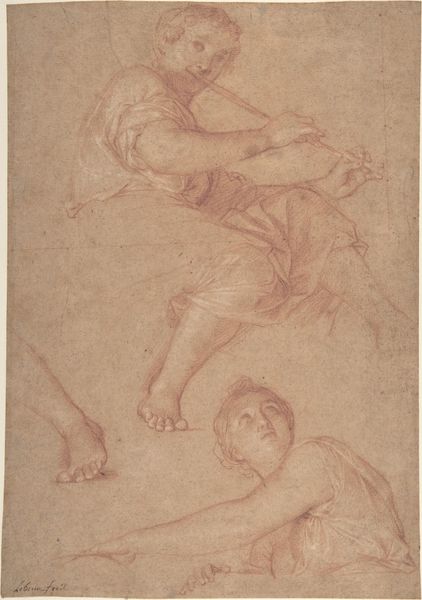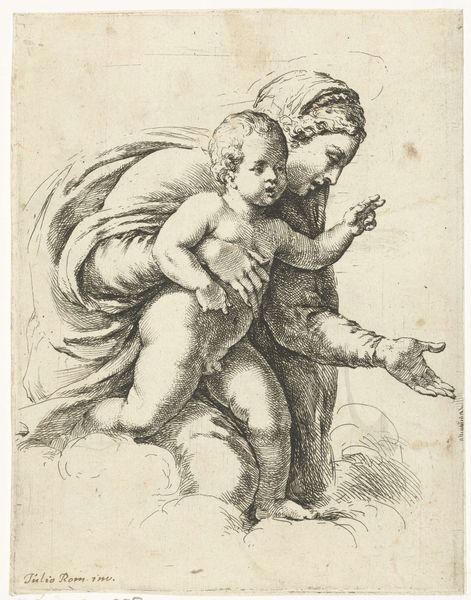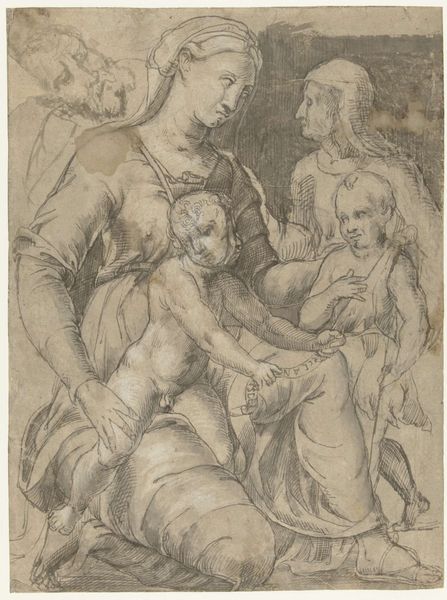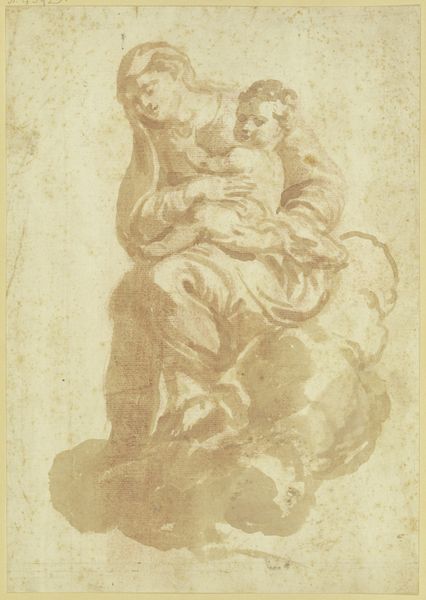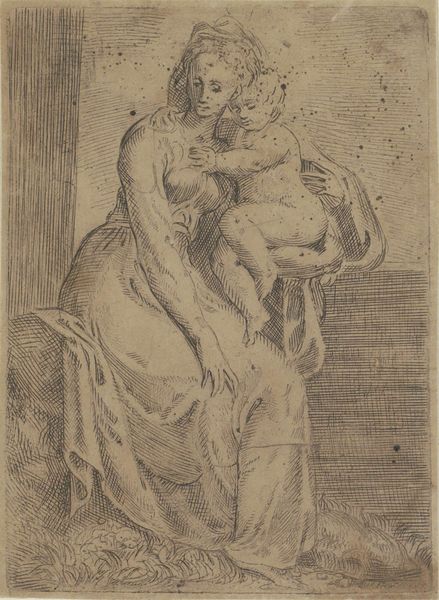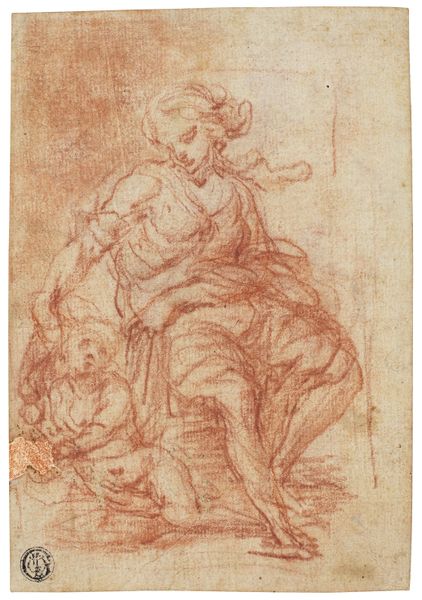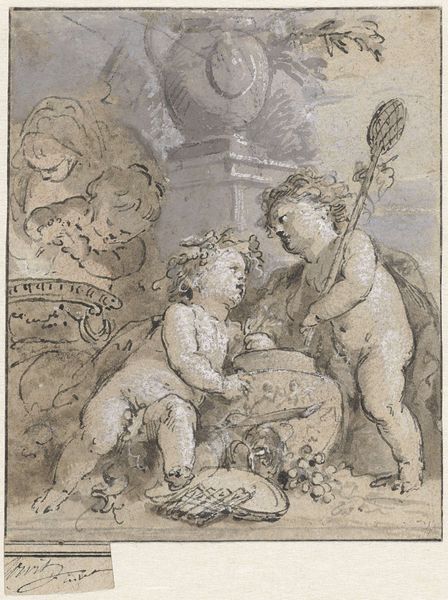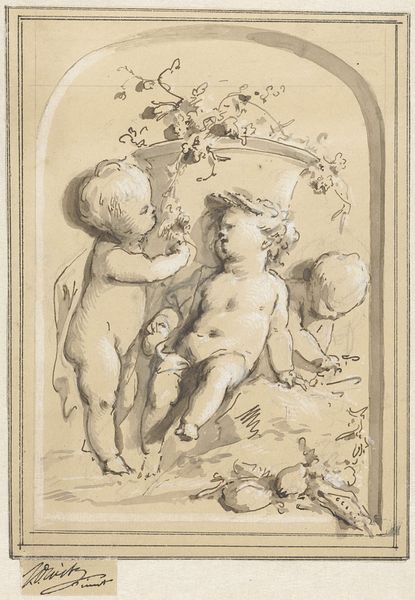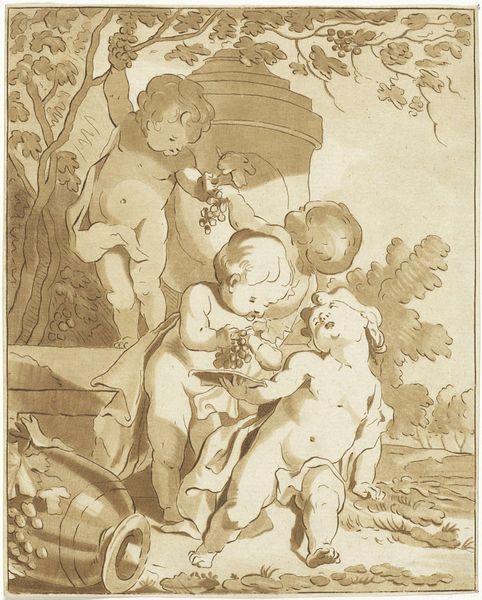
drawing, ink, pencil, pen
#
portrait
#
drawing
#
baroque
#
ink painting
#
pencil sketch
#
figuration
#
ink
#
pencil
#
pen
#
genre-painting
#
watercolor
Dimensions: height 165 mm, width 120 mm
Copyright: Rijks Museum: Open Domain
Curator: This drawing, entitled "Spelende kinderen" or "Children Playing," is attributed to J. Vermeulen and dates from sometime between 1700 and 1800. It appears to be rendered in ink and pencil. What strikes you initially about this piece? Editor: Well, the immediate feeling is one of lightness, almost like a fleeting memory. The delicate linework and the absence of strong tonal contrast create a dreamlike atmosphere. There’s also an appealing simplicity in the composition, focusing only on these three cherubic figures. Curator: Genre scenes, especially those featuring children, gained considerable popularity during the Baroque period. This work perhaps speaks to broader societal shifts, where childhood began to be viewed not merely as a prelude to adulthood but as a distinct and important phase of life. This created a market for images reflecting the perceived innocence and playfulness of children, catered for affluent patrons decorating their homes. Editor: The cross-hatching is fascinating. See how Vermeulen uses it not only to suggest shadow and volume but also to create texture, like the implied softness of the children's skin or the suggestion of grass underfoot. It directs the eye to the subjects and adds so much character, particularly to the contours of the figures. Curator: These drawings often served as preparatory studies for larger paintings or prints, giving artists opportunities to refine their compositions and test different arrangements before embarking on larger, more costly projects. Such drawings reflect a commercial ecosystem dependent on prolific, cost-effective art production. Editor: There's also a compelling vulnerability here. They're caught in a moment of complete absorption in play, oblivious to any outside gaze. Note the details like the curls of hair and chubby limbs which give that childlike impression. Curator: Indeed. Works like these were influential in shaping cultural perceptions of childhood, reinforcing notions of innocence and leisure that had real-world implications. We can think about how it may have created a moral framework around expectations and behaviours. Editor: From a formal perspective, this work is understated yet full of grace. The minimal lines convey an economy of means. This style encourages viewers to find and create narratives within. Curator: Examining "Spelende kinderen," one gains insight into the shifting social values that influenced artistic production. The work reminds us that even seemingly simple images reflect broader societal trends. Editor: And looking at the interplay of line, texture, and form provides the key to the sensitive evocation of youthful innocence and wonder within the artwork.
Comments
No comments
Be the first to comment and join the conversation on the ultimate creative platform.
